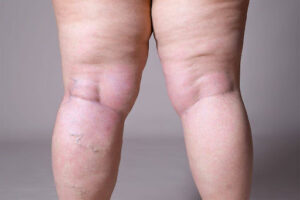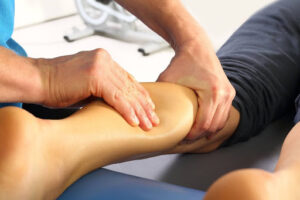How to Manage Lymphedema Naturally: Tips for Swelling Relief


How to Do Lymphedema Self Care at Home
Getting a lymphedema diagnosis from your doctor represents an important beginning point, but self-care at home will help you handle symptoms better. By wearing compression garments along with proper skin care to stop infections, you can use lymphedema home treatment to prevent complications while controlling your lymphedema condition. The following discussion will explain what lymphedema represents and its treatment methods. This article provides all the essential information about home self-care for lymphedema treatment.
What Is Lymphedema?
Fluid accumulation in the tissues underneath the skin surface from the lymphatic system constitutes the medical condition known as lymphedema. The lymph fluid usually travels through lymph vessels and lymph nodes before final disbursement into two major lymph ducts. The two lymphatic ducts enable lymph fluid to return to the bloodstream while controlling blood fluid amount and fighting infections.
Patients with lymphedema develop lymphatic drainage problems because of different troubles affecting their lymphatic system. Swelling occurs when lymph drainage is interrupted by either lymph node blockages or removals or damaged lymph vessels.
What Causes Lymphedema?
People at high risk need to understand the conditions that lead to lymphedema identification to take suitable preventive measures. The main reasons behind lymphedema development include vascular disease, cancer, and surgical procedures, yet various other causes exist alongside risk factors. Multiple known sources result in lymphedema development.
The essential lymphatic system components include lymph nodes, so cancer can interrupt drainage functions when it attacks these essential nodes. Lymphedema risks become greater for patients who have lymphatic system damage plus obesity or other lymphedema risk factors.
- Cancer: The treatment of cancer affects lymph nodes negatively, while surgery creates additional risks for lymphedema development. The medical team may need to perform biopsies or fully extract lymph nodes to check whether cancer has reached those locations. The damage done by a small biopsy is enough to create lymphedema, thus exposing you to a greater chance of getting lymphedema when undergoing such surgical procedures.
- Surgery: Any impacts or hurtful incidents involving the lymphatic system can result in lymphedema development. Any impact or trauma to the skin’s surface across lymph node areas can damage your lymphatic system, thus creating drainage problems that lead to lymphedema development.
- Vascular Diseases: Vascular diseases that cause vein blood accumulation subsequently lead to lymphedema in some patients. When venous fluid escapes into nearby tissues, it slowly reduces the effectiveness of the lymphatic drainage process. Chronic venous insufficiency is one of the medical conditions that causes this condition.
- Obesity: Research indicates that obesity is a risk factor for developing lymphedema, especially when another condition is the secondary cause. Your average weight does not need to include cancer, surgery, or injury to develop lymphedema since extreme obesity by itself becomes a sufficient cause of the condition.
- Genetic Factors: The occurrence of lymphedema develops as a genetic inheritance in several populations, similar to other medical disorders. It is essential to consult a doctor if you have inherited factors that raise your potential for developing lymphedema so they can give guidance on self-care and prevention methods.
- Treatment and Management: Basic treatments exist for managing lymphedema at home. You can get relief from symptoms by using available lymphedema self-treatment methods. Complete decongestive therapy, which uses numerous treatment approaches, provides maximum relief through lymphedema self-care.

Lymphedema Self-Care Methods
Elevation:
Gravity creates more resistance for fluid movement, thus making it difficult for your lymphatic system to empty fluids when they accumulate in your legs. Lifting the swollen body area acts as a preventive measure against fluid buildup, which in turn minimizes swelling in that area. Lymph fluid transport to operating lymphatic system areas becomes possible through limb elevation when the lymphatic system has sudden damage.
You should consider elevating swollen body parts when intense swelling blocks your movement or causes pain and discomfort because elevation works as a self-care strategy.
Compression:
People with lymphedema find compression garments to be among the most common recommended treatments. Wear compression garments on your affected limbs since this light compression helps stop fluid buildup while the garments encourage the movement of lymph fluid despite gravity’s pull. The range of compression products includes compression sleeves together with compression stockings that come with multiple compression levels. Check with your doctor or lymphedema specialist before starting to wear compression garments through a proper assessment of their appropriate usage.
The Flexitouch Plus System:
The Flexitouch Plus System from Vein Center in Arizona functions as another pneumatic compression device. The devices utilize pneumatic pressure methods to help lymph fluid drainage flow naturally. Medical professionals rarely implement compression garments or pneumatic compression treatment separately. These treatment methods work collectively in integrated lymphedema treatment where exercise, along with manual lymphatic drainage massages, proper skin and nail care, and a balanced diet also exist. The Flexitouch Plus System exists in three forms for treating head and neck regions as well as upper and lower body areas.
Skin treatment:
The proper care of skin represents a key element in controlling lymphedema. People with lymphedema encounter higher infection risks whenever they suffer injuries because proper skin moisturization acts as protection. Regular application of daily lotion remains crucial, along with immediate drying of your skin since regular cleansing is essential for reducing infection risks. Regular nail trimming of fingers and toes serves as a prevention method for scratches because it reduces the chances of bacterial entrance through cuts.
Manual lymphatic drainage:
The basis of lymphatic drainage stimulation rests in your ability to perform lymphatic massage. You can perform this easy method using hand movements to naturally direct lymph fluid movement. Learning the correct method for performing lymphatic drainage massages requires extensive mastery at home. Getting advice about performing manual lymphatic drainage massage should be discussed with your doctor or lymphedema specialist to become part of your self-care lymphedema treatment plan.
Exercise:
Exercise stands as a basic yet highly effective self-care lymphedema therapy step that you can perform. Exercising bolsters bloodstream circulation together with lymphatic drainage functionality, thus decreasing the swelling and related symptomatology.
People should undertake 30 minutes of moderate exercise as their minimum requirement every day. People with lymphedema can perform their exercises by walking in their neighborhoods or doing house chores. Try doing exercise for 30 minutes or more four or five days a week when daily exercise proves challenging.

Can You Prevent Lymphedema?
Even though stopping lymphedema seems challenging, there exist multiple steps for slowing down its advancement while controlling your distressing symptoms.
- Your weight maintenance should be the key preventive step for lymphedema since obesity stands independently as a risk factor. Some people spontaneously develop lymphedema through obese weight levels; thus, a nutritious diet combined with regular physical activity helps users fight their weight problems and minimize their lymphedema symptoms.
- Your lymphatic drainage will improve with proper hydration, and your weight maintenance becomes simpler as well. Hydration provides better flow to your lymphatic system because this system contains a significant amount of water.
When Should You See a Lymphedema Specialist or Doctor?
Particular complications require assessment by either a lymphedema specialist or a doctor for the right medical attention. People needing professional help should visit a specialist or doctor for progressive worsening swelling regardless of their adopted homecare methods based on elevation and exercise routines.
People with lymphedema-related blisters and ulcers need to consult a specialist for medical attention because these problems can develop into dangerous infections. When lymphedema produces severe pain, you should seek medical care since it may indicate your condition’s advancement or incorrect execution of home self-care strategies.
Why choose Vein Center in Arizona to easily practice lymphedema self-care?
Successful lymphedema self-care treatment includes compression therapy and elevation in addition to performing exercises. The beginning step for patients with lymphedema diagnosis requires discussion of home care strategies for symptom control with either their physician or a lymphedema specialist.
Vein Center in Arizona allows simple execution of lymphedema self-care procedures. The Vein Center in Arizona Flexitouch Plus System applies pneumatic compression techniques to stimulate gentle lymphatic drainage that lowers swelling and pain alongside other lymphedema symptoms. The pneumatic compression device from our company can treat lymphedema in three body areas: head and neck, upper body, and lower body. Address your lymphedema self-care needs through our current Flexitouch Plus System offer today.
Resources:
Mayo Clinic – Lymphedema Overview
https://www.mayoclinic.org/diseases-conditions/lymphedema/symptoms-causes/syc-20374682
Provides an overview of lymphedema, including causes, symptoms, risk factors, and treatment options.
National Cancer Institute – Lymphedema (PDQ®) Patient Version
https://www.cancer.gov/about-cancer/treatment/side-effects/lymphedema
Offers information on how cancer treatment can lead to lymphedema, prevention methods, and self-care strategies.
American Cancer Society – Lymphedema: What Every Cancer Patient Should Know
https://www.cancer.org/treatment/treatments-and-side-effects/physical-side-effects/lymphedema.html
Discusses lymphedema symptoms, risk reduction strategies, and treatments, including compression therapy and exercise.
Cleveland Clinic – Lymphedema Treatment & Management
https://my.clevelandclinic.org/health/diseases/15232-lymphedema
Covers lymphedema causes, diagnosis, prevention, and home remedies such as elevation, massage, and skincare.
Lymphatic Education & Research Network (LE&RN)
https://lymphaticnetwork.org
A comprehensive resource offering research updates, treatment guidelines, and support for those with lymphedema.
The National Lymphedema Network (NLN)
https://lymphnet.org
Provides educational resources, support groups, and professional recommendations for managing lymphedema.
